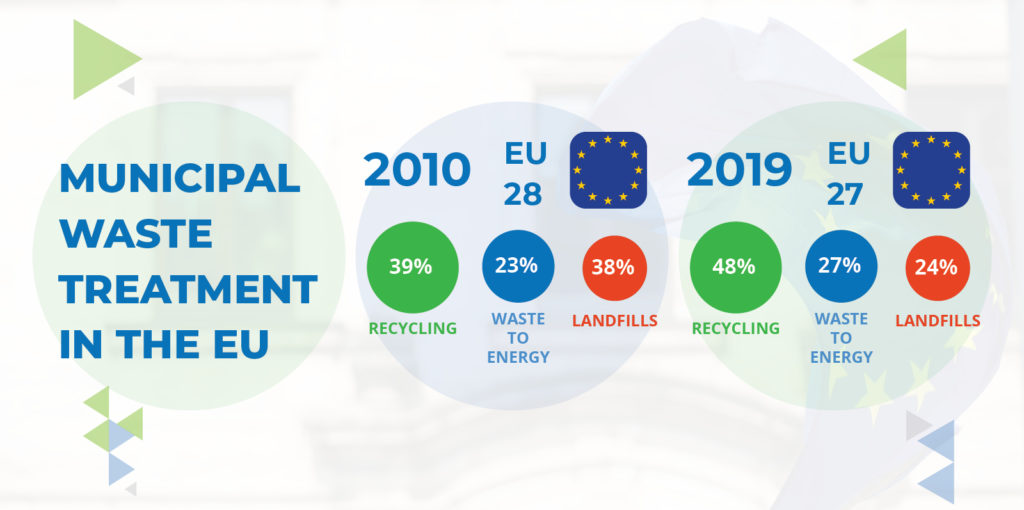How does the EU treat its Municipal Waste?
Eurostat data show once again that recycling and Waste-to-Energy are growing hand-in-hand to reduce landfills and improve EU waste management

Download here the Fact sheet in Pdf.
Data confirm that EU countries performing well with recycling prefer to send their share of non-recyclable waste to Waste-to-Energy plants.
Unfortunately, too many EU member states still send more than 40% of their municipal waste to landfills. (Some examples: 78% in Greece; 76% in Romania; 67% in Cyprus; and as much as 92% in Malta).
Why landfills are a problem
Landfills produce methane, a very potent Greenhouse Gas (84-86 times more powerful than CO2 over a 20-year period). They occupy valuable lands with high risks of water and soil pollution, including contributing to marine litter as the wind blows microplastics from (not sufficiently controlled) landfills to water bodies.
According to the waste hierarchy, landfilling should be the last resort option for waste treatment when there is no alternative left.
Recycling and Waste-to-Energy on the rise. Landfills are decreasing (but we need to keep an open eye)
In 2010, recycling accounted for 39%, Waste-to-Energy for 23%, and landfills for 38%. Thanks to better waste policies and societal changes, the treatment of waste improved over the years, with more recycling and Waste-to-Energy, and less landfills.
In 2019, recycling rose to 48% and Waste-to-Energy to 27%, while landfills fell to 24%. However, in 2019 landfills numbers rose for the first time in 20 years, shifting from 116 to 118 kg per EU-average citizen!
Waste generation is still an issue
The EU citizens generated around 225 million tonnes of municipal waste in 2019. This corresponds to 502 kg per person, an increase for the fifth year in a row, although down from the 2008 peak of 518 kg.
Both recycling and Waste-to-Energy increased their capacity in the last decade, almost halving the amount of municipal waste sent to landfills. However, much work is still needed to have less than 10% of waste landfilled in the EU by 2035, as required by the EU policies.
Data from EUROSTAT




